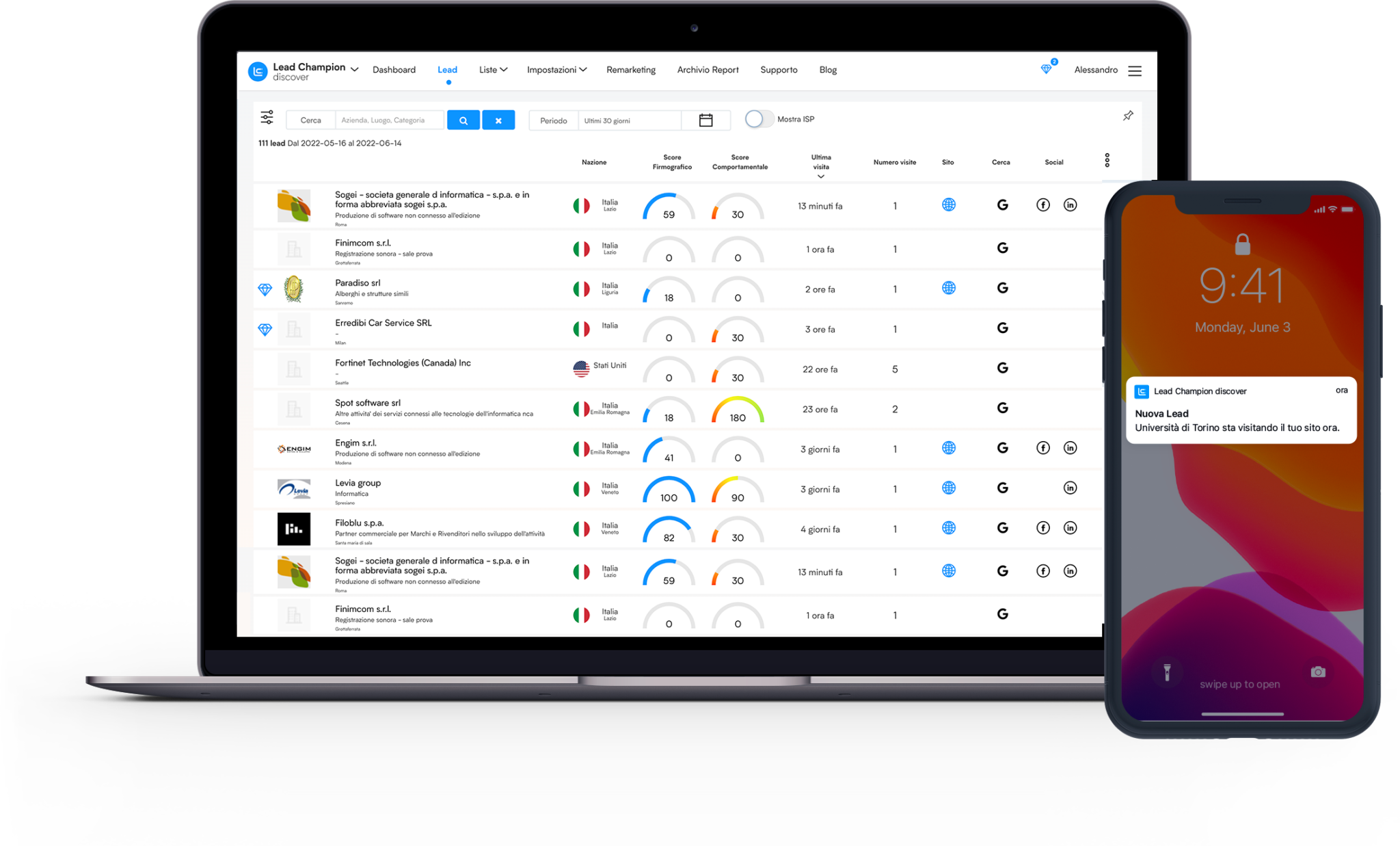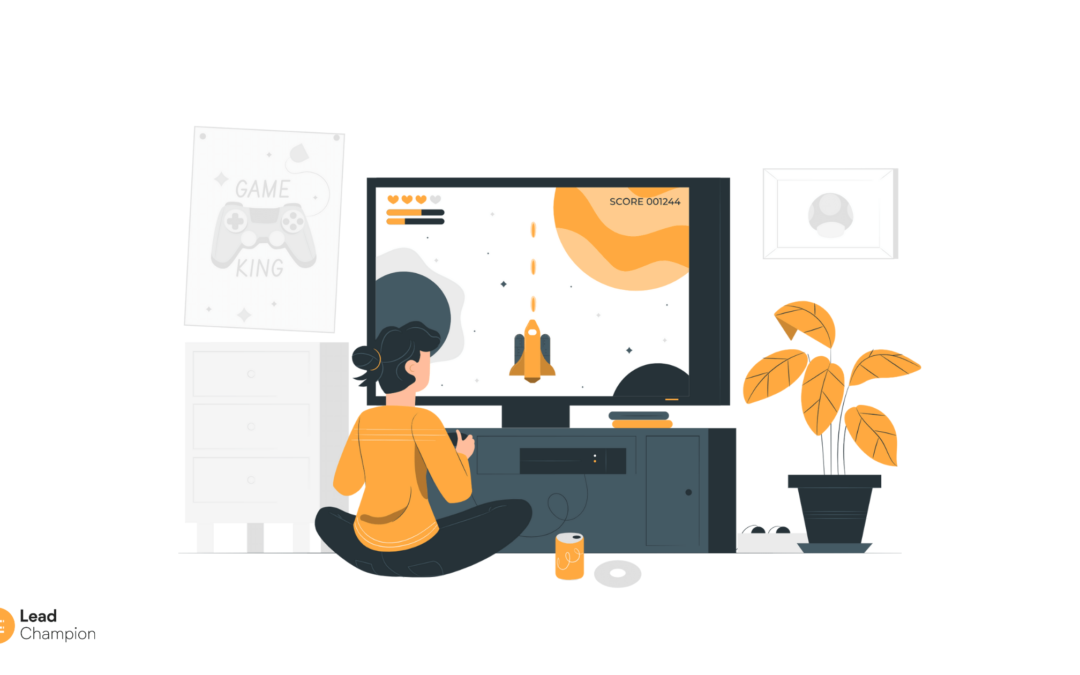“You can find out more about a person in an hour of play than in a year of conversation” – Plato
The Athenian philosopher already understood that play is one of the most effective ways to stimulate human instincts, create or gratify wants and needs, and engage people.
So how is it that, 2,400 years after his words, we still do not routinely take it into account within our business, marketing, lead generation strategies?
Yes, because gaming – and especially gamification – can come to our aid in significantly helping to increase a brand’s visibility, lead acquisition, and sales of products and services.
How? Let’s look at it starting with the key concept.
What is gamification?
Gamification is a set of techniques that use various elements typical of games in contexts that have little to do directly with gaming.
Think back to when you entered your personal information into your LinkedIn account. You probably noticed the horizontal progress bar indicating Profile Effectiveness through various levels: Beginner, Intermediate, Advanced, Expert, All-Star.
There, this (seemingly) simple element encourages you to enter additional information in order to advance the bar’s level of completion.

And it is also a simple yet effective example of gamification, which brings two undoubted benefits to the platform: it increases activity on the website and keeps the user hooked on the product.
In essence, gamification increases engagement levels through psychological mechanisms that are triggered by the interaction between two key sets of elements:
- the dynamics (or triggers), which represent all those unconscious needs that drive people to act: sense of ownership, perfection, fear of defeat or loss
- the mechanics, which correspond to all the individual elements of which a gamified system is composed: points, badges, virtual goods, leaderboards, levels, progress bars
Lead generation and quizzes
Imagine you have created a comprehensive guide on “How to Make Effective Presentations with Power Point” and put it on your web page that has thousands of unique monthly users.
While visitors to your page continue to grow, no one downloads the guide or leaves their email. In short: you’re not getting leads.
If the landing page is set up correctly, the problem may be another: Power Point presentations are considered – rightly or wrongly – boring by most.
One way to “freshen up” the content and make it more appealing could be to test your users by creating a quiz about their knowledge of Power Point.
That is certainly more challenging than the classic Call To Action “Download our complete guide here” and allows you to get qualified, on-target leads.
Such an activity was proposed some time ago by Veronica Gentili – an Italian Facebook marketing expert – to promote a course related to ADS on the platform.

The creation of this type of quiz is definitely engaging for those taking it, and based on the result, the user chooses whether or not to attend the proposed course, download the guide, and so on.
Obviously, for the purpose of lead generation, (few) useful data are requested such as email address, first name, last name, so as not to tire the user and prevent him from leaving the page feeling under questioning.
All clear? Now let’s see how some companies have concretely applied these principles within their marketing strategies.
Gamification and lead generation for businesses
Kirkland’s Home Decor is an interior decorating chain that aimed to get new buyers and fans and create interaction with the target audience that is already a customer.
To this end, it launched the “Cha-Ching!” game, a sweepstakes and instant win on Facebook.

First, a cash incentive was given to attract new fans: with each new fanpage like, one cent was added to the prize pool. At the end of the allotted time, a single fan won the amount of cash: over $25,000.
The second key element was the use of daily prizes, with the goal of keeping fans coming back to the page. By clicking on the Kirkland virtual store, fans received a “random” virtual gift, exchangeable for their friends’, and at the end of the day they could win the real-life version of the product they owned.
Knowing that the target audience loves coupons, the third selling point was the ranking of users based on playing time: players were assigned 4 different badge levels depending on how much they had played, each of which gave access to new coupons that could be used in the store.
The results? During the Cha-Ching! promotion, Kirkland’s became the sixth fastest-growing fanpage in the world on Facebook. In one month, it reached 203,604 new fans, generated 13 million wall posts and nearly 179 million impressions on ads.

Autodesk, on the other hand, is a company that develops 3D modeling software. After a period of declining sales, the managers decided to integrate the logic of gamification to shake up the business, thanks in part to a very interesting piece of data they have: the probability that a user will buy the software doubles when it is tried at least four times.
Thus was born the Undiscovered Territory project, a game integrated into the product that is based on the concept of a race against time: the user must complete actions that can only be performed by testing certain advanced features of the software itself within the 30-day free trial.
Those who finish first in the monthly rankings are entitled to a free copy of the full version. The results of this strategy speak for themselves:
- software usage sessions: +54
- clicks on the purchase button: +15%
- average lifetime value for the channel linked to the free trial: +29%
All this is told in detail in this video:
Using gamification to benefit your business is a guarantee of great results – what are you waiting for to incorporate it into your marketing strategy?
Get new leads
from your site with
Lead Champion!
Discover the companies that visit
your products and services.
Start now your free demo
of Lead Champion discover:


